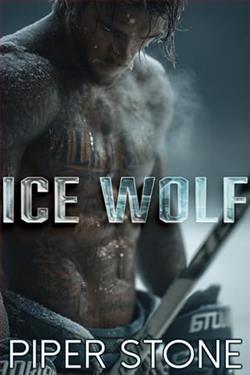Page 28 of U Is for Undertow (Kinsey Millhone 21)
The brush had been cleared within a twenty-foot radius along the slope, probably by order of the fire department. Sutton followed me reluctantly as I crossed the grass and made my descent. There was no handrail and the steps themselves were deep, with ten-inch risers that forced us to descend the stairs like toddlers, putting both feet on every step before moving to the next. This portion of the lot was useless to all intents and purposes. A series of terraces had been carved out of the hill. The first level was planted with dwarf fruit trees. The second offered shelter in a weathered wood pagoda lined with benches and bleached by the elements to a soft silver gray. The third was given over to rose beds that, at this point, were sadly neglected.
After that, the land fell away gradually. The bottom of the hill butted into a grove of trees that stretched out on either side, in varying degrees of density. I counted three large oaks and six mature black acacias. Clusters of pittosporum and eucalyptus were intermingled with saplings. I wouldn’t have called this “the woods,” but to Sutton, at the age of six, it might have looked like one. Where the undergrowth was thin, I could see sections of a paved road that must have been Via Juliana, one of the primary arteries through Horton Ravine. If I’d been searching for a secluded location to serve as a grave site, I wouldn’t have picked this. From above, the hillside was open to view. Given the staggered pattern of trees below, the area would have been visible from the road as well.
Sutton stood there, his hands in his pants pockets, his gaze moving across the landscape as he struggled to get his bearings. I could see his confusion now that he was faced with a scene that had seemed so vivid in his mind. He moved to his right, traipsing through knee-high weeds before he came to a standstill. A fence blocked his path, the chicken wire sagging under a swarm of morning glory vines. The sign affixed to the fence post read:
DO NOT TRESPASS
Private Property Keep Out
No Access to Bridle Trail
THIS MEANS YOU!!
He walked up the hill for a distance, peering at the trees in range of him. He stopped again and shook his head. “This is all wrong. I don’t see the tree I used as a hideout and I don’t see the oak I hid behind when I was spying on the guys.”
“Maybe the oak was cut down.”
“But the fence is wrong, too. Where did that come from? I didn’t climb a fence. I’m sure of it. This is all screwed up.”
“Sutton, it’s been years. Take your time.”
He shook his head in frustration.
“Would you quit being so negative?” I said.
“I’m not negative.”
“You are, too. You should listen to yourself.”
He turned and scanned the woods again, no happier than he’d been. The guy was getting on my nerves. I watched while he walked down the hill toward the trees. I followed the sagging fence line as he had, but where he went down the hill, I climbed up. A profusion of wildflowers had sprung up among the grasses. Grasshoppers skittered ahead of me as I walked. I turned and looked back as Sutton disappeared into the trees.
Below and to my right, I caught a glimpse of the rear of a house: patio doors, a deck, an outdoor table and chairs. Since I wasn’t well acquainted with the neighborhood, I couldn’t judge the relationships between properties. The irregular course the fence had taken suggested it had been erected in conformity with a meandering lot line, separating the parcel that fronted Ramona Road from the one that faced the secondary road below. Dimly I remembered the fork where a smaller tributary split off from Via Juliana. From where I stood, only the one house was visible, but there were doubtless others on that same street.
Sutton whistled, a shrill, piercing note forced from between taut lips and teeth. For years I’d worked to master the technique, but usually managed little more than an asthmatic wheeze and the risk of hyperventilation. I set off, trudging down the hill in his general direction. He emerged to the left of me and waved. I picked my way across the uneven ground, trying to avoid the numerous holes housing god knows what assortment of rodents.
I followed Sutton into a clearing shaded by a canopy of trees. Here the temperature was ten degrees cooler than the sun-drenched hill. The far side of the glade was open to Via Juliana. A riding trail angled across the open space, its muddy surface punctuated by hoofprints. The trail was clearly well used, dotted with fresh horse manure as well as desiccated mounds of previous equine BMs. In the center of the clearing there was a stone horse trough, three feet by six. The water was fed through a pipe linked to a circulating pump that kept the depths aerated and algae-free. The stone was darkened with age and the shimmering pool looked cold and black.











